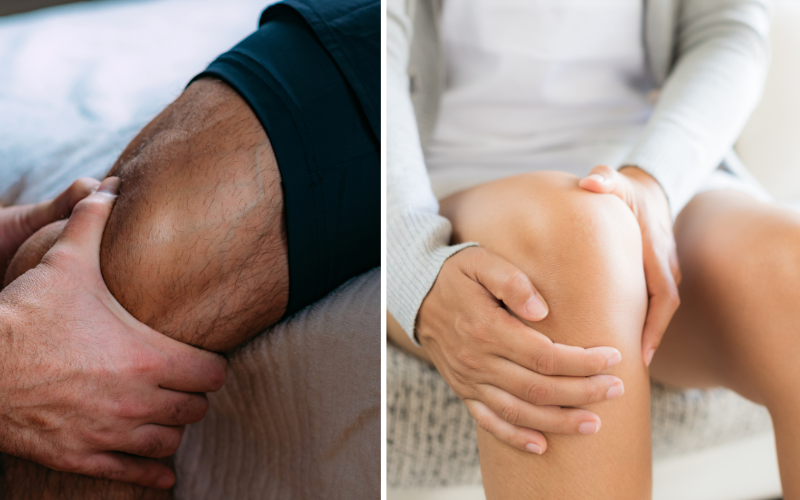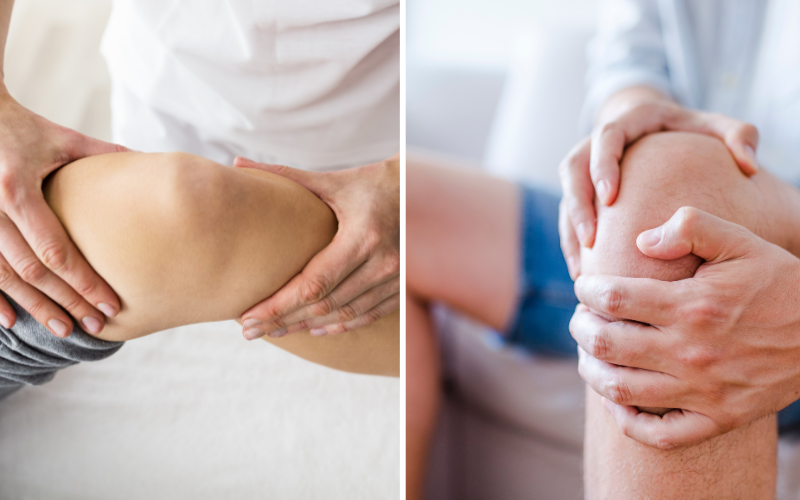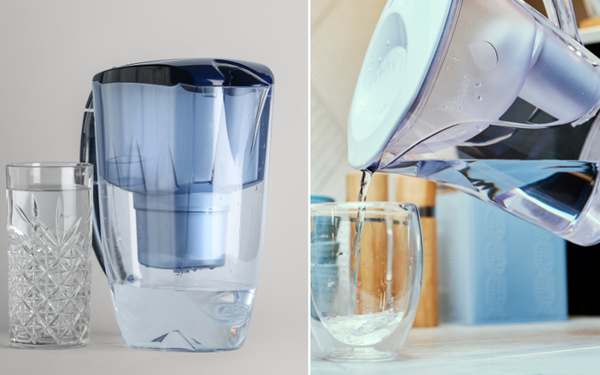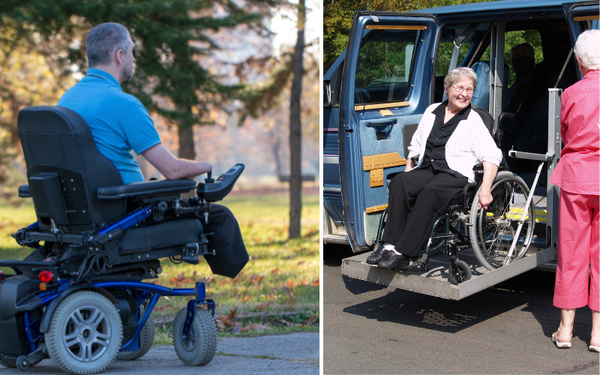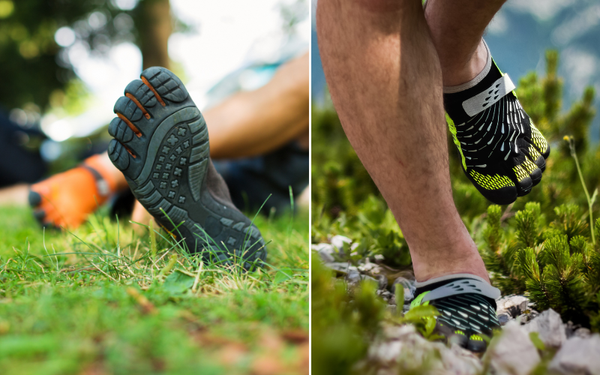Tired of suffering from knee pain and looking for an effective solution? What if we told you that the answer might lie in the power of massage? In this blog post, we dive into the world of massagers and address the question, “are massagers good for knee pain?” Discover different types of massagers designed to target knee pain, the best practices for using them, and additional strategies to support your journey to a pain-free life.
Key Takeaways
- Massage therapy can be an effective solution to provide relief from knee pain.
- Three types of massagers for knee pain relief are handheld massagers, massage guns and heated knee massagers.
- To maximize the benefits for relieving knee pain, best practices such as focusing on surrounding muscles and combining with exercise & physical therapy should be adopted when using a massager.
Understanding Knee Pain and Its Causes

Knee pain is a common issue that affects individuals of all ages and activity levels. This discomfort, swelling, or irritation in or around the knee joint can sometimes be relieved fast with appropriate treatment. However, a solid grasp of the underlying causes of knee pain is necessary for effective treatment.
Various factors can contribute to knee pain, including tight muscles around the knee joint, meniscus or ligament tear due to overuse, or more serious illnesses such as osteoarthritis and osteoporosis. Knee pain can limit functional mobility, making simple movements like squatting, walking, or going up and down stairs difficult, and may even be related to issues in the inner thigh muscles.
Massage therapy has been explored as a potential solution for knee pain relief, particularly in cases of knee osteoarthritis. While there is no definitive resolution on whether massage therapy is beneficial for knee osteoarthritis, it may provide relief from pain even as the knee progresses toward the need for a replacement. The rationale behind massage therapy is that manipulating the tissue through kneading and stroking can increase blood flow to the area, facilitating the healing process through the body’s immune response.
An interesting study in the Journal of Manipulative and Physiological Therapeutics found that massage therapy resulted in minimal yet clinically important changes for pain relief in older adults with knee osteoarthritis. Another study reported short-term benefits from aromatherapy massage for knee pain caused by osteoarthritis, although knee problems may continue to worsen. These studies highlight the potential of massage therapy in providing pain relief, but a comprehensive system evaluation is still needed to confirm its effectiveness in treating patients with knee osteoarthritis.
Types of Massagers for Knee Pain Relief

To help you find the most suitable solution for your knee pain, let’s explore the different types of massagers available for knee pain relief: handheld massagers, massage guns, and heated knee massagers. Each of these devices has unique benefits and techniques, so it’s important to familiarize yourself with their features and best practices for optimal knee pain relief.
Handheld massagers are the most common type of massager used for knee pain relief.
Handheld Massagers
Handheld massagers offer a versatile solution for knee pain relief. They allow you to:
- Target specific muscles around the knee
- Provide relief from pain and tension
- Reduce stress in the knee muscles
- Promote relaxation
- Reduce tension
By utilizing handheld massagers, you can help alleviate knee pain.
For the best results when using a handheld massager for knee pain relief, adhering to optimal practices is key. Targeting adjacent muscles can help reduce tension and enhance flexibility in the knee. Combining massage with exercise and physical therapy can augment the potency of the massage, leading to improved blood flow and tissue healing, promoting better muscle recovery.
Using the correct technique and duration when handling a massager is crucial. Following proper guidelines can help you achieve the best results in pain relief, increased range of motion, and overall improvement in knee function. Moreover, considering additional strategies such as:
- Stretching
- Strengthening exercises
- Hot and cold therapy
- Lifestyle changes
To further alleviate knee pain fast, consider these tips.
Massage Guns
Massage guns, offering percussive massage therapy, are a game-changing option for those seeking deep tissue massage to relieve knee pain caused by strained muscle groups or postural imbalances. These powerful devices offer:
- High-frequency percussion force
- Aid in tissue healing
- Stimulate blood circulation
- Promote better muscle recovery
When using a massage gun for knee pain relief, it’s important to focus on the surrounding muscles, not the joint itself. The round, ball-shaped attachment is the most appropriate head for providing relief to knee muscles, as it covers larger surfaces, facilitating efficient massage of large muscle groups.
To ensure the best results, combine massage gun use with exercise and physical therapy, and adhere to proper technique and duration. Selecting a massage gun that has:
- a comfortable grip
- minimal noise output
- portability
- a variety of head attachments
is important in effectively managing knee arthritis. Follow the recommended amplitude, speed, and stall force settings to maximize the benefits and minimize the risk of injury.
Heated Knee Massagers
Heated knee massagers provide the unique advantage of combining heat and massage therapy to stimulate blood flow, reduce soreness, and increase knee flexibility and range of motion. These devices offer a convenient and cost-effective solution for knee pain relief by targeting both pain and inflammation simultaneously.
Research has shown that using low level continuous heat in conjunction with conventional physical therapy, under the guidance of a physical therapist, is effective in addressing chronic knee pain, decreasing pain and disability in patients with knee osteoarthritis, and enhancing quality of life scores for physical function, pain, and general health perception. Heated knee massagers, such as the HeatPulse Knee Massager, are designed to deliver these benefits while remaining convenient and easy to use.
Due to their limited availability, it’s advisable to purchase devices like the HeatPulse Knee Massager promptly to ensure you don’t miss out on the potential relief they can provide. Remember to consult with a healthcare professional for a proper diagnosis and treatment plan for knee pain before using any massager.
Best Practices for Using Massagers on Knee Pain
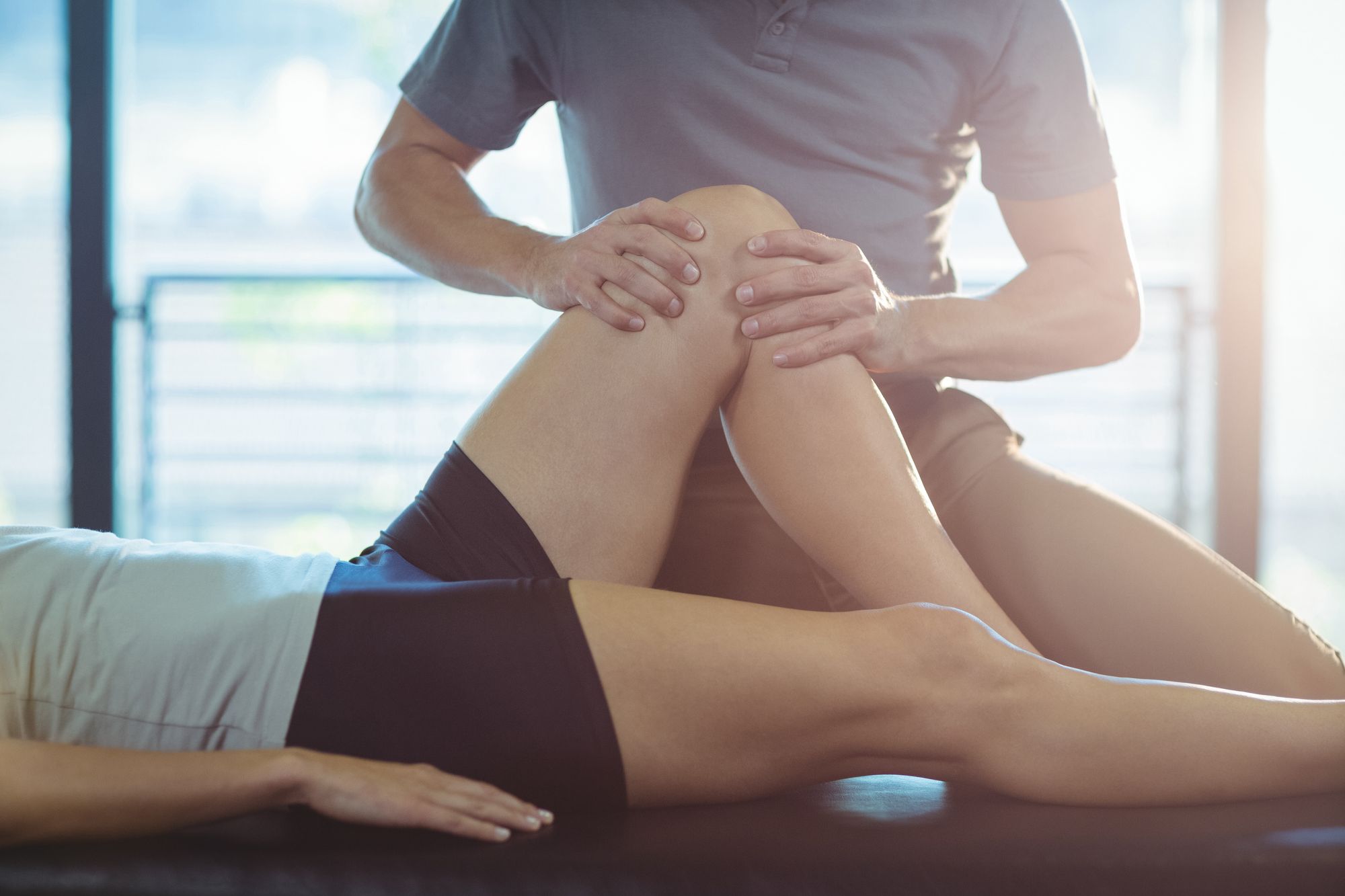
Now that we’ve explored the different types of massagers for knee pain relief let’s look at some general best practices for using them. For maximum benefits from massagers, it’s important to focus on surrounding muscles, integrate massage with exercise and physical therapy, and adhere to the correct technique and duration.
Let’s delve deeper into these recommendations.
Target Surrounding Muscles
For effective knee pain relief with massagers, concentrate on the muscles surrounding the knee joint rather than the joint itself. Massaging the following muscles, which are all connected to the knee, can help reduce knee pain:
- Hamstrings
- Adductors
- Quadriceps
- Calf muscles
By targeting surrounding muscles, you can alleviate pain and improve mobility in the knee. When using a massage gun during a workout, run down the length of the muscle as it is engaged in the movement to achieve optimal results.
Incorporating these techniques into your massage routine can lead to improved outcomes and more effective pain relief. Remember to always consult a healthcare professional for a proper diagnosis and treatment plan for knee pain.
Combine with Exercise and Physical Therapy
A combination of massage, exercise, and physical therapy can strengthen and stabilize the knee muscles, resulting in sustained pain relief. By enhancing joint range of motion and focusing on strengthening muscles, you can achieve lasting relief from knee pain.
Exercises such as quad sets, straight leg raises, short arc quads, and other knee-strengthening movements can be combined with massagers for knee pain relief. Stretching exercises and massage therapy techniques can also be used in conjunction with massagers to further alleviate knee pain.
Incorporating these additional strategies into your routine can lead to improved outcomes and more effective pain relief. Remember to always consult a healthcare professional for a proper diagnosis and treatment plan for knee pain.
Follow Proper Technique and Duration
Applying the correct technique and duration when using massagers for knee pain helps prevent overuse and potential injury. When using a massage gun, refrain from applying deep tissue massage to the knee muscles without proper knowledge and technique. Apply an adequate amount of massage oil to the skin and massage the sore muscle areas, removing any excess oil with a towel.
It’s also important to alternate between muscle groups, allowing each area enough time to react to the massage. Spend 15-30 seconds per muscle group, with a total of 2-3 minutes. Following these guidelines can help you achieve the best results in pain relief, increased range of motion, and overall improvement in knee function.
In the case of an open wound or bruise on the knee, avoid using a massage gun, as it may cause pain and swelling. Always consult a healthcare professional for a proper diagnosis and treatment plan for knee pain before using any massager.
Additional Strategies for Alleviating Knee Pain

Alongside massagers, other strategies can also be beneficial in alleviating knee pain. Maintaining a healthy weight can reduce the amount of stress on the knee joints, thereby alleviating knee pain. Wearing appropriate supportive footwear can help decrease knee pain by providing additional cushioning and support.
If you’re still experiencing knee pain despite trying these strategies, consult a medical professional for further evaluation and guidance. Remember, a comprehensive approach to addressing knee pain is key to achieving lasting relief and improved quality of life.
Summary
In conclusion, massagers can be a valuable tool in alleviating knee pain when used correctly and combined with exercise and physical therapy. By understanding the causes of knee pain, choosing the right type of massager, and adhering to best practices, you can effectively manage knee pain and improve your overall well-being. Ultimately, the key to lasting relief lies in a comprehensive approach that considers both physical and lifestyle factors. Embrace the power of massage and take the first step towards a pain-free life today.
Frequently Asked Questions
Does vibrating massager help knee pain?
Vibrating massager can be beneficial for knee pain as studies have shown that it has additional positive effects on pain, muscle strength and physical function compared to strengthening exercises alone.
What is the best massage for knee pain?
Knee friction massage is the best option for relieving knee pain as it helps reduce inflammation and muscle tension, as well as improve circulation in the joint. Start with light pressure and gradually increase the pressure while moving around the knee joint in a circular, side-to-side, or up-and-down motion.
Is it okay to use a massage gun directly on the knee joint?
It is not recommended to use a massage gun directly on the knee joint; instead it is best to focus on the surrounding muscles.
What are the benefits of combining massage with exercise and physical therapy for knee pain relief?
Massage combined with exercise and physical therapy can strengthen and stabilize the muscles around the knee, leading to long-term pain relief.
Are there any additional strategies to alleviate knee pain besides using massagers?
In addition to using massagers, maintaining a healthy weight, wearing supportive footwear, and consulting with a medical professional are all strategies that can help reduce knee pain.
You Might Also Like...
